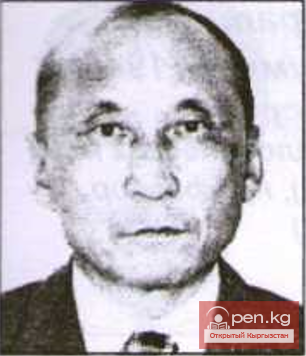Events 200 Years Ago
Let’s return to the events of 200 years ago. What was Osh primarily for the formidable rulers of Fergana at that time?
A coveted point, the owner of which gained influence over a vast region - an important section of the Great Silk Road.
Thus, starting from the 1760s, the rulers of Kokand, trying to expand their territory at the expense of southern Kyrgyz lands, turned their greedy eyes toward the city of Osh. Several sources briefly mention that the ruler of the city was the feudal lord Hadji-biy. He was considered the head of the large Kyrgyz clan Adygine, part of the Ichkilik tribe.
This was a large tribal union in Southern Kyrgyzstan, settled in Alai and the Fergana mountains, also migrating in the Osh district. It included both numerous "newcomers" and the local Kyrgyz population, which had lived on the territory of Pamir-Alai since ancient times.
As the ruler of Osh, Hadji-biy, as indicated by Eastern sources, could muster "200,000 people from the Burot horde, scattered from Bukhara to the East." These data (even if the numbers are exaggerated) indirectly indicate that the city of Osh had significant political importance in Fergana in the mid-18th century. Another Kyrgyz tribal ruler from the Ichkilik, Kubat-biy (or Kavad-mirza), also played a significant role during that period, who was, as reported by Bukhara chronicles, "a companion and support of Irdana" - the ruler of Kokand. Initially an ally, then suspected of treason, he unexpectedly left Irdana-biy, which doomed him to defeat in the struggle against the ruler of Uratyub. Kubat-biy simply "took all his Kyrgyz and departed." His power and strength were such that Kubat-biy established diplomatic relations with the Qing Empire: he corresponded not only in his own name but also on behalf of his ally - the ruler of Kokand. It turned out that Kokand and Osh were then acting as equals on the international stage, particularly in contacts with the neighboring Qing Empire.
However, as the Kokand domain strengthened and rose, its rulers began to view neighboring cities as desirable objects of conquest. In 1762, Irdana-biy, taking advantage of the inter-feudal strife among the Kyrgyz, attacked them, devastating their lands "in the country of Uze" (Uzgen). Moreover, the pretext for this was the robbery of Kokand merchants by Kyrgyz feudal lords (from the Adygine clan).
In particular, the ruler of Osh, Hadji-biy, leading the united forces of the Ichkilik, Adygine, and Mongol clans, opposed Irdana but was defeated. The Kokand forces captured the city of Osh, hypocritically claiming that it had allegedly belonged to Kokand since ancient times and was now returned to the khanate. The Kyrgyz troops retreated to the mountains but did not cease their struggle. When two years later the Kokand ruler set out from Osh to conquer Khojent, Hadji-biy unexpectedly attacked the Kokand domain from the east.
Thus, Irdana was forced to return and unleashed all his might against the Kyrgyz. Hadji-biy was captured by him, but apparently not for long, as Osh soon reappears in the records as being under Kyrgyz control. However, Osh, even with its Kyrgyz district, was no longer able to seriously oppose the strengthened Kokand, and subsequently, in the sources, it is referred to only as one of the cities of the Andijan vilayet of the Kokand domain, and later as an independent vilayet. In the economic documents of the Kokand Khanate from the 1850s to 1870s, "the vilayet of Osh" is often mentioned among other regions of the khanate, subordinate to its capital - Kokand.
However, the majority of Kyrgyz tribes were still not subject to the Kokand rulers. This is noted, in particular, by the famous Russian geographer and traveler, the "involuntary wanderer" Philip Efremov. He was first a Kazakh, then a Bukhara prisoner, and at the end of the 18th century escaped through Osh (in whose fortress wall only two gates remained) to Alai and India, circumnavigated Africa on an English ship, and only through England returned to St. Petersburg. Here he soon published his notes, which quickly gained popularity, in which he recounted his "Odyssey." Thus, F. Efremov narrates in his book that even in the 1770s, the southern Kyrgyz moved freely between Osh and Kashgar "in small herds," were effectively independent, had their own "princes," and engaged in barter trade with Kokand. But this did not last long. Narbuta-biy gradually expanded his power over the surrounding territories of Osh, where the Kyrgyz roamed. Having established himself in Osh and Alai, the Kokand feudal lords continued their predatory campaigns into other areas in southern Kyrgyzstan in Ketmen-Tube and to the north of the region.
Ali ibn Osman al-Oshi














































